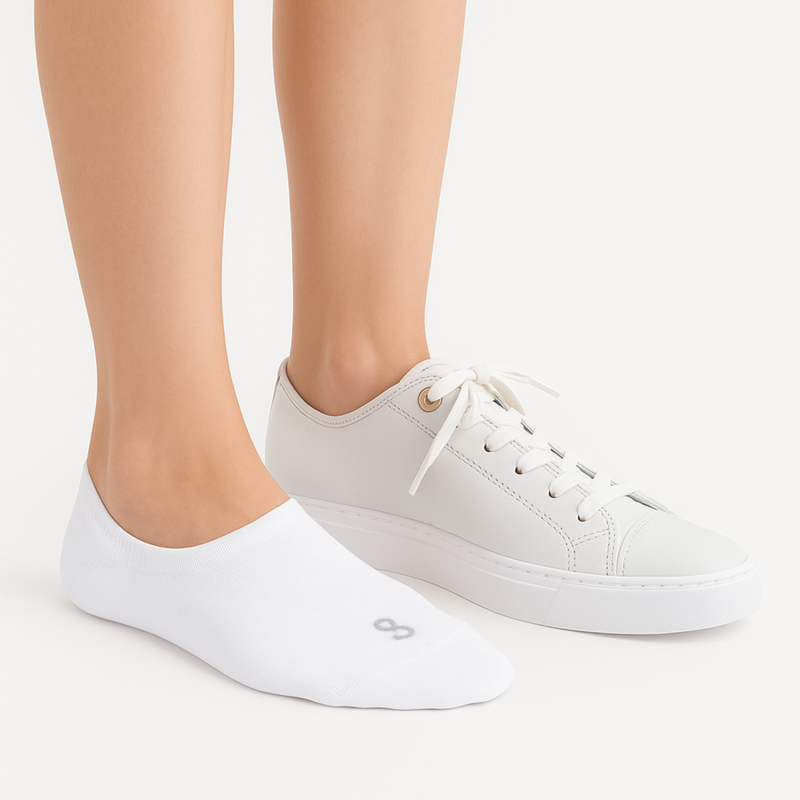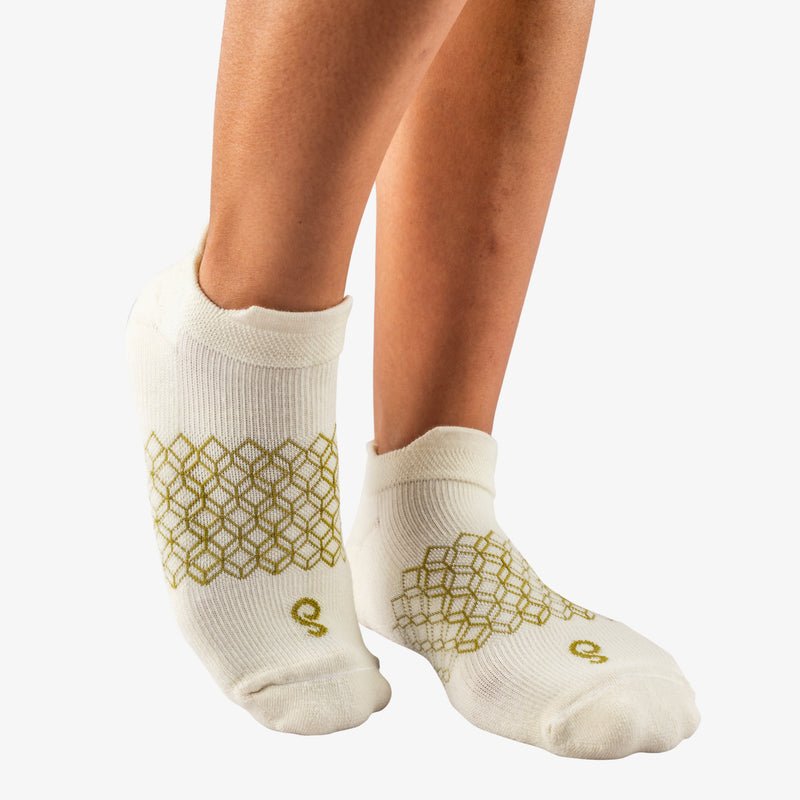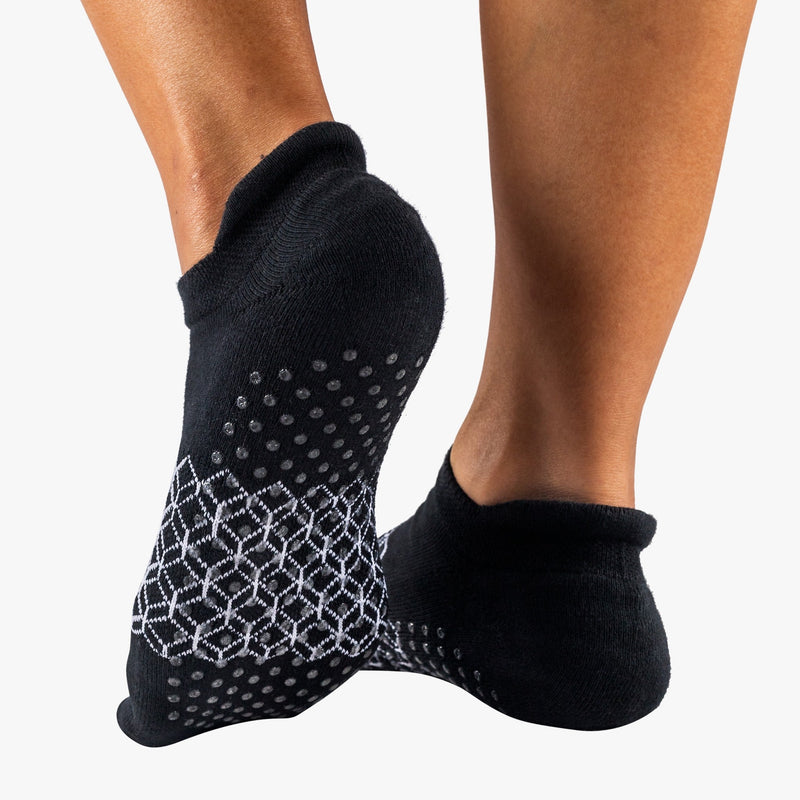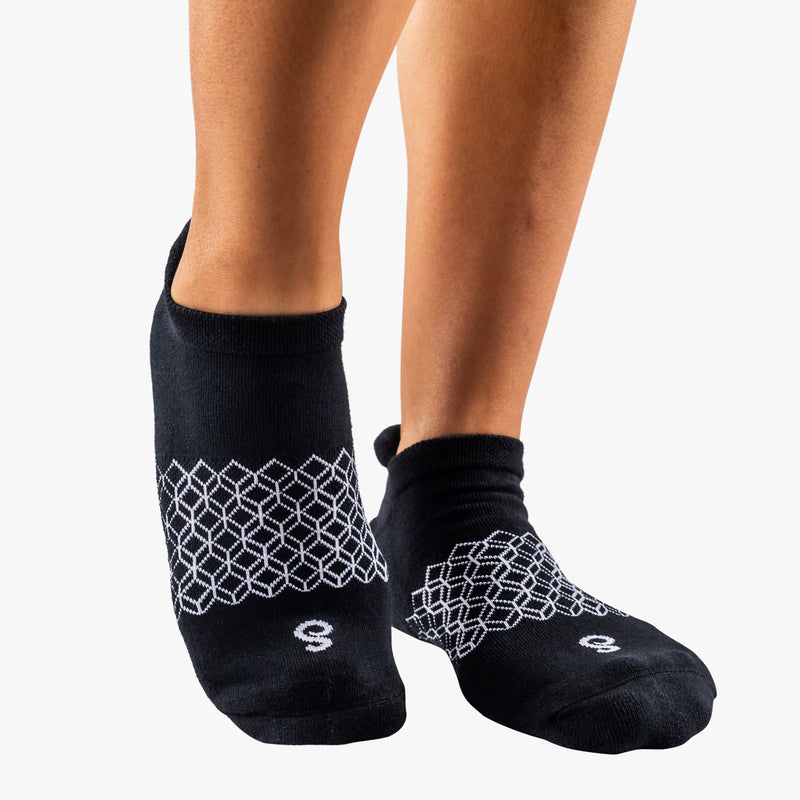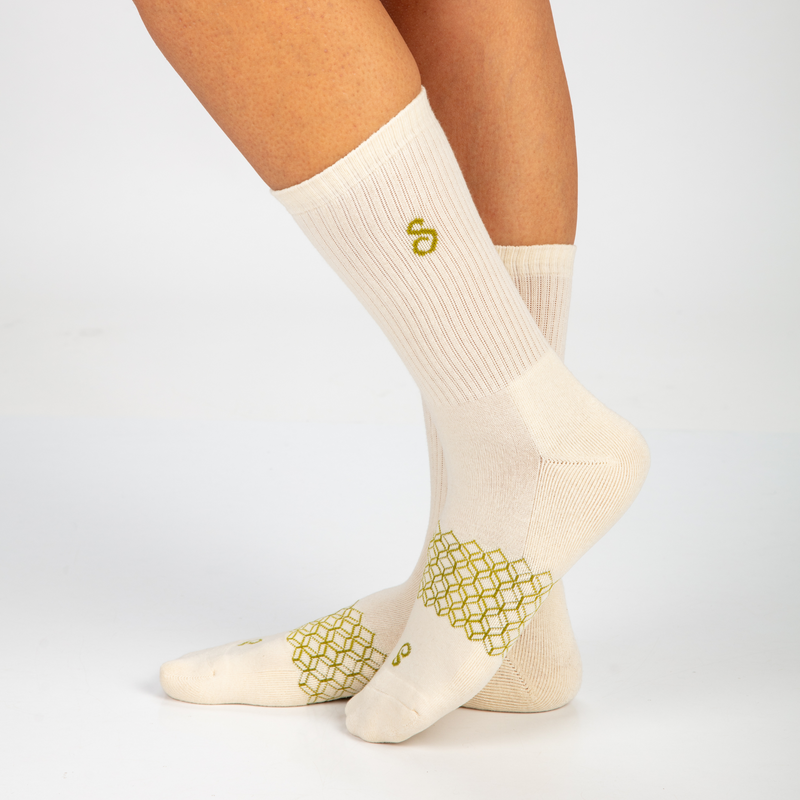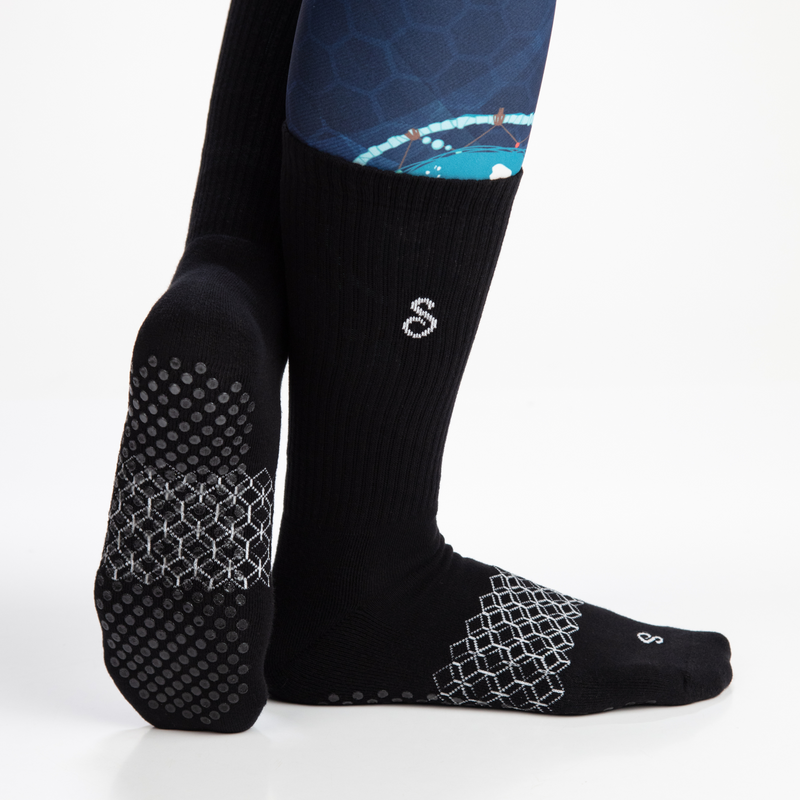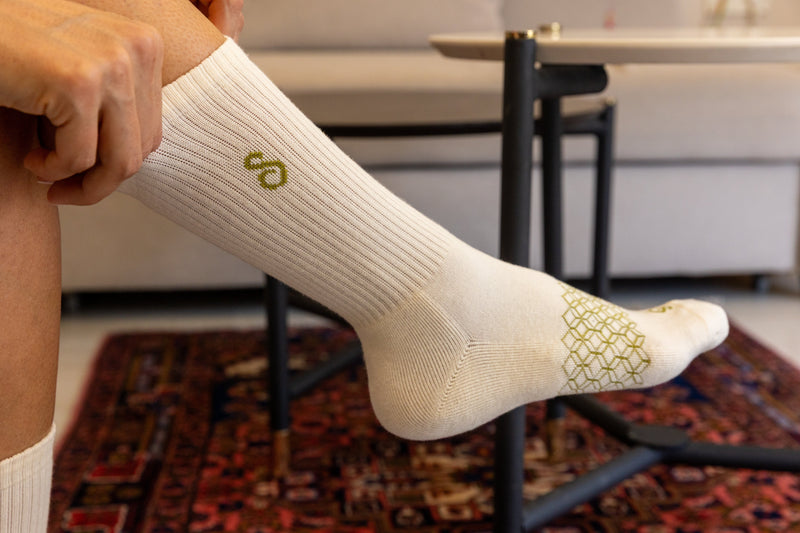
Crew socks are a staple in many wardrobes, providing comfort and warmth. Due to the wide range of leg and calf shapes, longer socks like crew or mid-calf heights introduce additional fit considerations.
In many cases, the elastic cuffs on these socks can be tight and restrictive when worn for the first time. To loosen the elastic cuff on crew socks, soaking them in warm water and gently stretching them can effectively restore comfort without damaging the fabric.
Many people experience discomfort due to overly tight cuffs, which can lead to restrictions in blood flow and an overall unpleasant wearing experience. By taking simple steps at home, anyone can enhance the fit of their socks, making them more enjoyable to wear throughout the day.
Knowing how to properly care for and adjust the fit of crew socks can prolong their lifespan and maintain comfort. Readers will find practical tips and methods to ensure their socks fit just right, making their everyday routine a little more pleasant.
Understanding Elastic Cuffs
Elastic cuffs play a crucial role in the functionality and comfort of crew socks. Knowing the different types of materials, the mechanics behind elasticity, and potential issues can aid in maintaining the quality of the socks.
Types of Elastic Materials

Elastic cuffs are typically made from a blend of materials, including rubber, spandex, and nylon.
- Rubber: This material provides good stretch and recovery but may degrade over time due to heat or moisture.
- Spandex (Lycra): Offers superior elasticity and comfort, ensuring a snug fit without restricting movement.
- Nylon: Often used in combination with other materials to enhance durability and strength.
Each material contributes to the overall elasticity and comfort of the cuff.
Mechanics of Elasticity
Elasticity refers to a material's ability to deform when stretched and return to its original shape when released. The performance of elastic materials is influenced by factors such as:
- Molecular Structure: The specific arrangement of molecules affects how well a material can stretch and recover.
- Tension: Proper tension during the sock manufacturing process is essential for achieving the desired fit.
These mechanics work together to create cuffs that maintain their shape and functionality over time, ensuring they stay comfortably in place.
Common Issues with Tight Elastic Cuffs
Tight elastic cuffs can lead to discomfort and restrict circulation.
Several common issues include:
- Diminished Elasticity: Over time, elastic materials may lose their stretch, resulting in a tighter fit.
- Wear and Tear: Frequent washing and wearing contribute to both the breakdown of materials and reduced elasticity.
- Sizing Issues: Selecting the wrong size can result in socks that are uncomfortably tight.
Identifying these problems early allows for timely solutions, ensuring a better wearing experience.
Preparing to Loosen Elastic Cuffs
Before starting the process of loosening elastic cuffs on crew socks, it is essential to gather the required materials and assess the tightness of the cuffs. These steps ensure the procedure is effective and tailored to the individual needs of the socks.
Gathering Necessary Materials
Collecting the right materials is crucial for successfully loosening elastic cuffs. The following items are recommended:
- Warm Water: This helps relax the fabric fibres.
- Mild Detergent: This can aid in breaking down any built-up grime that may affect elasticity.
- Spray Bottle: For easy application of the warm water and detergent mixture.
- Towel: To place the socks on while working.
- Measuring Tape: To assess the cuff's circumference before and after treatment.
Having these materials ready ensures the process runs smoothly. It is also advisable to use a pair of socks that are not a favourite in case any damage occurs during the treatment.
Assessing the Elastic Cuff's Tightness
Before using any techniques to loosen the cuffs, it is important to evaluate their tightness. This can be done by:
-
Measuring the Tightness: Use the measuring tape to gauge the circumference of the cuff while it is on a flat surface.
-
Performing a Personal Test: Put on the socks and assess comfort levels. If they leave marks on the skin, they may be too tight.
This assessment helps to determine the need for loosening or whether alternative socks might be a better fit. Understanding the specific level of tightness can guide the choice of method for loosening the elastic cuff effectively.
Manual Stretching Techniques
To loosen the elastic cuff on crew socks, manual stretching techniques can be highly effective. These techniques involve using hands for direct manipulation or employing external objects to achieve a wider stretch.
Hand Stretching Method

The hand stretching method is a simple process that can effectively widen the cuff of crew socks. To begin, hold the sock by the cuff with one hand, ensuring the fabric is fully extended.
Steps:
- Grip firmly: Use the thumb and finger to secure the cuff while keeping the sock taut.
- Stretch gently: Pull outward on the cuff while rotating it slightly to avoid damage.
- Repeat as needed: Perform this motion back and forth for several minutes.
This technique may take a few attempts to find the desired looseness. Regular stretching can maintain the sock’s new shape.
Using Objects for Wider Stretch
Using objects can provide additional stretching power to the elastic cuff. This method utilises everyday items to achieve a more uniform stretch.
Objects to consider:
- Bottles: Place a bottle between the cuff of the sock, ensuring it fits snugly.
- Tennis balls: Stuff a tennis ball inside the cuff to widen the opening gradually.
Steps:
- Insert the object into the cuff.
- Let the sock sit for a few hours or overnight to allow for adjustment.
- Remove the object gently once the desired stretch is achieved.
This method is effective for those who find hand stretching labour-intensive, as it allows for passive stretching over time.
Heat Application Methods
Applying heat can effectively loosen the elastic cuff on crew socks. This can be done through various methods that employ water or air, ensuring the fibres become more flexible. Below are two specific heat application methods that can help achieve the desired results.
Warm Water Soaking
Soaking crew socks in warm water is a straightforward approach. First, fill a basin or sink with warm—not boiling—water. The temperature should be comfortable to the touch, ideally around 40-50 degrees Celsius.
Submerge the socks completely and allow them to soak for 15-30 minutes. The warmth helps relax the elastic fibres without damaging them. After soaking, gently stretch the cuffs by hand while they are still damp.
Rinse the socks in cool water to help set the new shape. Air dry them flat to maintain the elasticity adjustment. This method is effective for slight tightening in the cuff area.
Using a Hairdryer
A hairdryer can offer precise control over the heat application. To start, lay the socks flat on a heat-resistant surface. Use the low or medium heat setting on the hairdryer to avoid overheating.
Focus the airflow on the elastic cuff, keeping the nozzle about 15-20 centimetres away. Move the dryer around to evenly distribute the heat and prevent any one area from overheating.
After a few minutes of warmth, carefully stretch the cuff by hand while it remains warm. This method provides an immediate impact on the elasticity of the fabric and can be repeated as necessary. Always ensure the socks are not excessively hot to the touch after this process.
Sewing Adjustments
Making sewing adjustments to the elastic cuff of crew socks can significantly enhance comfort. The process involves removing the old elastic and replacing it with new material for a better fit.
Elastic Cuff Removal
To begin the adjustment, the elastic cuff needs to be removed carefully. Use a seam ripper to gently detach the stitching around the cuff. It's crucial to avoid damaging the fabric of the sock while doing this.
Once the stitching is removed, the elastic should come off easily. If the elastic is particularly tight, cut it carefully to ensure minimal damage. After removal, inspect the sock for any frayed edges or damage. Repair these areas with a needle and thread if necessary, to maintain the sock’s integrity.
Sewing in a New Elastic
With the old elastic removed, the next step is to sew in a new elastic. Select a new elastic band that matches the desired snugness. Measure and cut the elastic to fit the cuff line comfortably.
Pin the elastic in place around the cuff, ensuring it lies flat. Using a sewing machine, stitch the elastic securely to the sock, making sure to stretch it slightly while sewing to maintain tension.
Finish the seam by sewing a zigzag stitch for added durability. This prevents fraying and keeps the elastic in place. Trim any excess threads, and the sock is now ready to wear with a comfortable fit.
Aftercare and Maintenance

Proper aftercare ensures the longevity and comfort of loose elastic cuffs on crew socks. By implementing careful washing methods and incorporating regular stretching practices, the elasticity can be preserved and the fit maintained.
Washing and Drying Tips
When washing crew socks, it is advisable to use cold water and a gentle cycle. This helps prevent further shrinkage of the elastic fibres. Adding a mild detergent, free from harsh chemicals or bleach, will also reduce wear.
After washing, avoid tumble drying, as the heat can cause tightening. Instead, air drying is preferable. Lay the socks flat or hang them to dry naturally, ensuring they retain their shape. It is beneficial to check the socks periodically during the drying process to ensure the elasticity does not constrict.
Routine Stretching Practices
Incorporating a routine stretching practice can maintain the elasticity of crew socks. This can be done by gently pulling both ends of the cuff for a few seconds. Repeat this stretching at least once a week, especially before wearing them.
Another effective method is to put the socks on a sock form or a similar device to maintain their shape when not in use. This helps prevent the tension that can lead to tighter cuffs. Regular attention to these practices will prolong the useful life of the socks and ensure continued comfort.
Shopping for crew socks?
hipSwan's Roam Crew and Flow Crew are made from organic combed cotton as the base yarn and feature advanced "sock tech" to deliver a premium feel, including:






